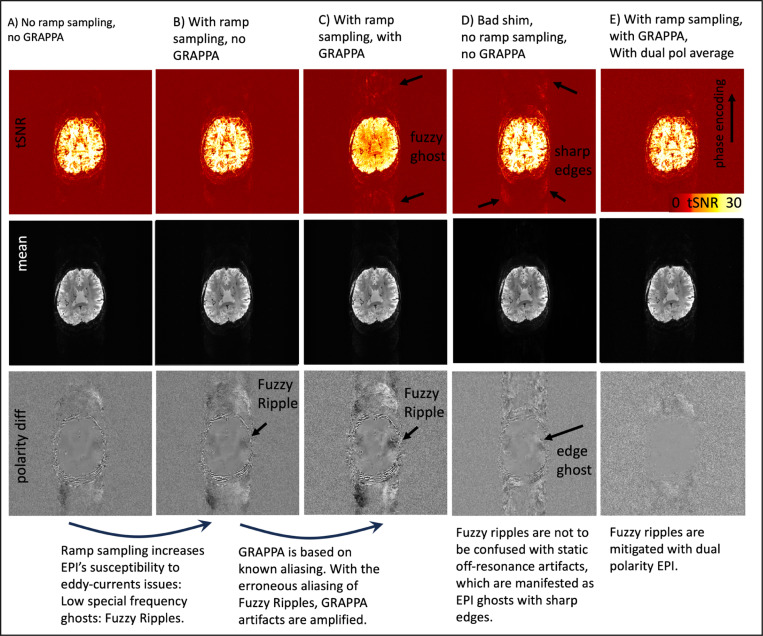Fig 4: Interaction of Fuzzy Ripples with other common EPI artifacts: GRAPPA ghosts and static off-resonance ghosts.
This figure illustrates EPI acquisitions with different combinations of ramp sampling, poor B0 shim, and GRAPPA. The unusually large field of view (FOV) was purposefully chosen to detect peripheral ghost artifacts. Signal differences between reverse EPI polarity images are shown to emphasize spatial ghost patterns that might be too subtle to observe with conventional image intensity windowing. The read direction in left-right, phase encoding direction is anterior-posterior.
A) Without ramp sampling, imaging data are acquired only during the flat top of the gradient waveform. This minimizes the impact of large gradient errors, resulting in relatively weak Fuzzy Ripples in the EPI images.
B) With ramp sampling enabled, EPI becomes more sensitive to the largest gradient errors, causing Fuzzy Ripples to intensify. These ripples appear as aliasing of low spatial frequencies, with no sharp edges evident in the phase encoding direction.
C) GRAPPA, which relies on a known aliasing pattern, is affected by erroneous Fuzzy Ripple ghosts and thus amplifies their impact.
D) This differs from static off-resonance effects. For instance, with suboptimal shimming (deliberately altered in this case), the off-resonance effects do not amplify the low-spatial frequency Fuzzy Ripples. Instead, they introduce edge ghosts at high spatial frequencies, which differ from Fuzzy Ripples in their appearance.
E) The dual-polarity averaging approach effectively mitigates both sources of artifacts. The resulting images are nearly artifact-free.
Acquisition parameters of data presented here are mentioned in methods section 3.3. See supplementary Figure S1 for the reproducibility of these results in another participant and on another scanner.

